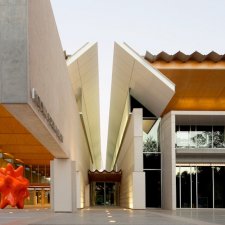- About us
- Support the Gallery
- Venue hire
- Publications
- Research library
- Organisation chart
- Employment
- Contact us
- Make a booking
- Onsite programs
- Online programs
- School visit information
- Learning resources
- Little Darlings
- Professional learning
Alfred George Stephens (1865– 1933), editor, journalist and publisher, was the first student enrolled at Toowoomba Grammar School. Though he qualified for admission to the University of Sydney, he did not study there, serving an apprenticeship as a typographer in Sydney before returning to Queensland to work as editor of the Gympie Miner and then as editor and part-owner of the Cairns Argus. Selling his stake in the newspaper in 1892, he travelled to North America and Europe, sending articles back to Australia for publication in a number of periodicals. He joined the Bulletin as sub-editor in 1894; in 1896, he established the paper’s famous ‘Red Page’ of literature-related news, reviews and anecdotes. As literary editor and head of the Bulletin’s publishing arm, ‘A.G.S.’ was the country’s most widely-read literary critic and significantly influenced the careers and work of a generation of writers, among them Henry Lawson, Joseph Furphy, Steele Rudd, Miles Franklin and Mary Gilmore. He rented a room in Rowe Street, Sydney with books, a bunk and combined basin and desk in it, and often stayed in the city after his famous Saturday night literary gatherings instead of returning to his home up the North Shore line. Stephens left the Bulletin in 1906 and focused on his own creative writing – now judged vastly inferior to his criticism – and on the production of his literary journal, the Bookfellow, which foundered, was resurrected, failed again and eventually ruined the father-of-seven financially. Between the demise of Bookfellow in 1925 and his own death twelve years later, Stephens continued to produce articles, short stories and verse and edited books on the poets Henry Kendall and Christopher Brennan.
Collection: National Portrait Gallery
Purchased 2012
Alfred George Stephens (age 45 in 1910)



On one level The Companion talks about the most famous and frontline Australians, but on another it tells us about ourselves.



Visit us, learn with us, support us or work with us! Here’s a range of information about planning your visit, our history and more!



We depend on your support to keep creating our programs, exhibitions, publications and building the amazing portrait collection!